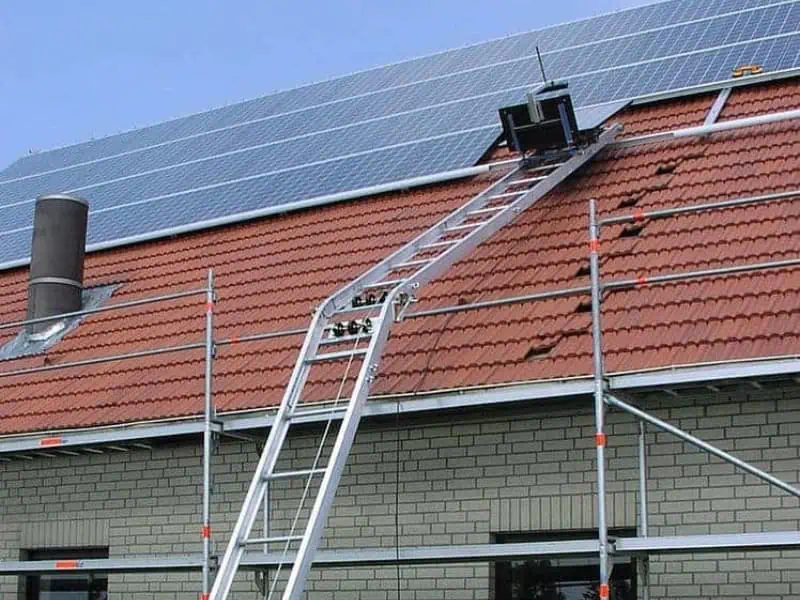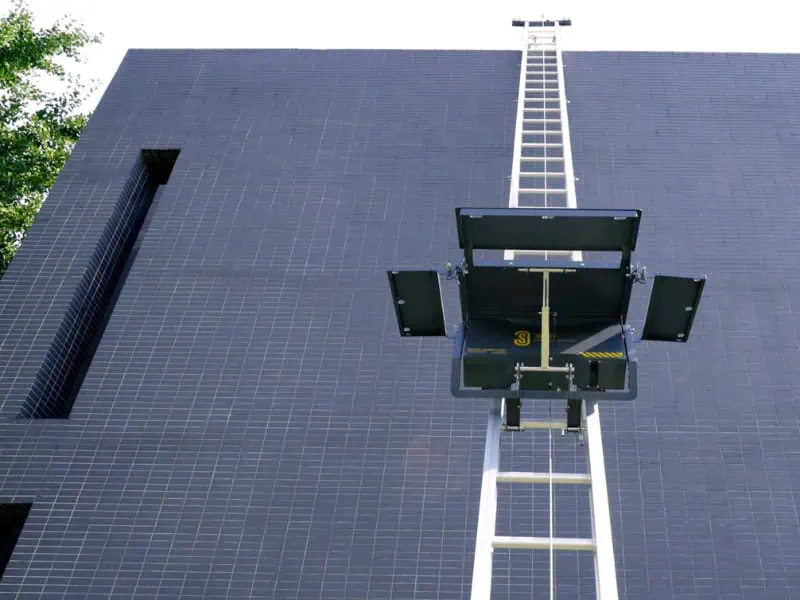A battery-powered hoist is essential because it turns risky, stop–start lifting into fast, controlled movement that protects crews and timelines. Straightaway, you cut manual handling, reduce exposure at height, and keep your program on track. Moreover, you simplify access to tight sites where shared plant causes delays. With a battery-powered hoist, you shift materials smoothly, without tying up skilled labour or improvising with makeshift gear. This article explains the practical benefits, common pitfalls, and clear steps for safely and efficiently using powered lifting on Australian job sites.
What challenges do builders face when lifting materials manually on job sites?
Manual lifting creates safety and planning headaches that accumulate throughout a shift. You know the drill: awkward loads, wet mornings, and pressure to finish. Before long, the team is tired, coordination slips, and quality suffers. Here are the manual-lifting challenges:
- Lower back strain: Repetitive ladder carrying inflames the back, shoulders, and knees.
- Unstable loads: Sheets and tiles twist, forcing awkward grips and unsafe reaches.
- Wet or dusty surfaces: Footing degrades, and slips turn minor errors into incidents.
- Two-person lifts: Extra labour moves the tools off and onto handling duty.
- Damage risk: Drops and bumps scuff finishes and chip edges.
- Time drag: Slow handballing kills momentum and clogs the workface.
In practice, these issues compound. Additionally, morale dips when every delivery means another slog. Sorting the lift method early keeps your crew focused on installation, not endless cartage; that’s how you keep the day on track and the quality good as gold.
How does a battery-powered hoist reduce physical strain and improve job site safety?
Powered lifting replaces brute force with predictable, motorised travel. As a result, teams handle fewer hazardous movements and gain steadier placement at height. The reduction in exposure leads to fewer near-misses and calmer work rhythms. Here are the safety and strain-reduction gains:
- Distance from hazards: Remote operation keeps hands clear of pinch points.
- Predictable paths: Guided rails prevent sway and awkward corrections.
- Controlled speeds: Smooth motion reduces overreaching at roof edges.
- Less fatigue: Energy goes into building, not hauling.
For compliance, align your controls with Australian safety regulations for manual lifting tasks. The guidance helps you identify hazardous tasks and implement plant solutions mid-program, no dramas. Train operators and receivers, map exclusion zones, and record near-miss reviews. Those habits reinforce safer systems and simplify supervision. Ultimately, fewer manual handling cycles mean fewer sore backs and steadier crews. Consequently, risk drops, productivity rises, and your schedule stays on track even when conditions shift.
Why do traditional hoisting methods slow down construction efficiency?
Old methods struggle with access, timing, and control. Rope rigs sway, team lifts pull people off the tools, and the shared plant arrives late. Consequently, materials crawl to the workface, and the day loses rhythm. Here are the efficiency blockers with traditional hoisting:
- Labour drag: Extra hands tied up lifting rather than skilled installation.
- Queues and clashes: Waiting for cranes or forklifts stalls the crew.
- Control issues: DIY setups sway, prompting resets and delays.
- Material damage: Bumps and drops add rework and clean-up.
Informative table — Comparative impact on workflow
| Method | Crew needed | Typical cycle time | Placement control | Likely outcome |
| Manual carry on ladders | 2–3 | Slow | Low | Fatigue, slips |
| DIY rope/pulley | 2 | Moderate | Medium-low | Stops to steady |
| Crane or telehandler (shared) | 1 + operator | Unpredictable | High | Waiting windows |
| Battery-powered hoist | 1 | Fast | High | Flow on track |
The major advantage is faster setup and repeatable cycles. Moreover, you avoid bookings that blow out when weather and traffic intervene. With fewer touch points, there’s less rework, and the crew stays focused on productive tasks rather than firefighting delays.
How does a battery-powered hoist simplify rooftop and ladder lift operations?
Rooftop work needs steady arrivals, clear roles, and space to move. A ladder hoist provides guided travel, predictable landings, and separation between lifting and climbing. In turn, the flow becomes routine and safer. Here are the rooftop and ladder lift advantages:
- Guided carriage: Loads track straight to the eave without sway.
- Remote finesse: Millimetre placement keeps edge work tidy.
- Compact footprint: Works in laneways and tight access without road closures.
- Receiver clarity: One person receives; others keep installing.
Mid-operation, you’ll often standardise carriers for panels, tiles, or skip bins. That streamlines swap-overs and reinforces safer rooftop handling. When the brief calls for proven gear that suits Australian sites, consider quality battery-powered hoist equipment designed for modern builders.
Use marked zones, edge protection, and a simple call-and-response: approach, land, clear. Those small disciplines keep everyone confident and work humming. In short, you gain clean arrivals, fewer hold-ups, and a tidier roofline. Consequently, installation teams remain on the tools, and deadlines stay realistic.
Which construction projects benefit most from using a battery-powered hoist?
Projects with height, repetition, or tight access gain the most. Moreover, sites that juggle deliveries and multiple trades see immediate benefits in flow and coordination. Here are the projects that gain the most:

- Rooftop installs: Tiles, ridge caps, sarking, and flashings delivered smoothly.
- Solar and HVAC: Panels and units lifted without scuffing fins or frames.
- Renovations and extensions: Materials to upper levels without internal damage.
- Facade and cladding: A steady feed to fixers keeps lines straight.
Cycle times become predictable, and the site footprint stays small—handy for suburban and inner-city jobs. Additionally, limiting manual carries reduces exposure on stairs and temporary scaffolds.
That’s on the money for safety and quality, especially when access windows are narrow. Overall, the hoist becomes the quiet workhorse that keeps deliveries flowing. You’ll notice cleaner finishes, fewer traffic clashes, and a calmer pace that still hits targets.
What makes a battery-powered hoist the smarter upgrade for modern builders?
The upgrade isn’t only about power; it’s about control, repeatability, and documentation. Predictable lifting makes planning easier and improves confidence across the crew. Here are the smarter-upgrade reasons:
- Consistent cycle times: Forecasting becomes reliable, even with weather wobbles.
- Simpler WHS admin: Clear controls align with risk assessments and permits.
- Multi-purpose carriers: One setup handles materials and debris removal.
- Battery management: Spare packs keep the line moving without pause.
You’ll see reduced downtime when injuries lessen and materials arrive on cue. Furthermore, clean landings and steady travel prevent edge damage and save touch-up time. Keep a brief lift log—load, time, receiver—and refine the routine week by week; improvements compound quickly, no dramas.
Final thoughts
Choosing powered lifting is about protecting people and safeguarding the program. When manual handling is engineered out and travel is controlled, risk falls and productivity holds steady through the day. For practical next steps and site-specific setup guidance, consider speaking with the local specialists, whose advice is as good as gold, and learn how Conveying & Hoisting Solutions makes lifting tasks easier and safer; a brief is all you need to match equipment and method to the job without fuss.




